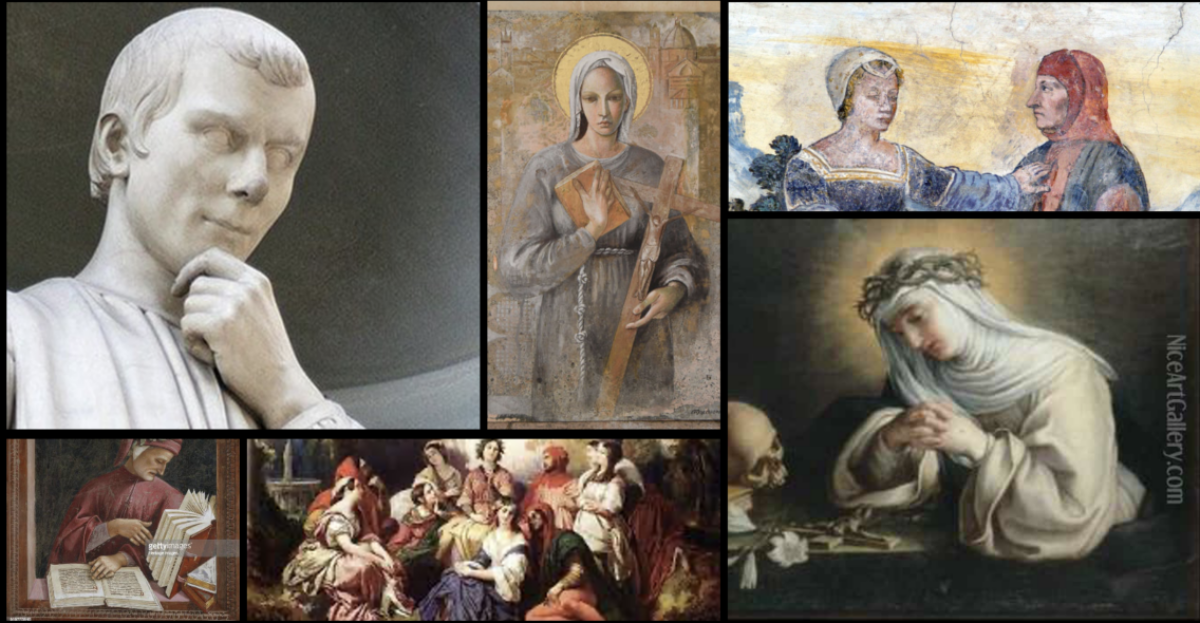In the canzoniere, we get to see the state of Petrarch’s mind many times, but there’s one metaphor for his state of mind that stands out to me. Canzone 189 portrays Petrarch’s state of mind as a ship at sea. The ship can be seen as his mind, with the sea and weather representing thoughts, or emotions. As we go on in the canzone, we can see that Petrarch feels a mix of negative emotions, placing the image of a sea in the middle of a storm with the rough waves of the sea. “My ship full of forgetful cargo sails, though rough seas at the midnight of a winter…”.

As the poem goes on, Petrarch portrays his emotions by describing the weather in greater detail. “… the sail, by wet eternal winds of sighs, of hopes and of desires blowing breaks;”. Here we see that he feels lost and stuck with the sail breaking, as the sails are what help move the ship (Petrarch’s mind). At the end, he confirms this feeling of being lost, describing his lack of reasoning, and skill to move the ship. “… and I despair of ever reaching port.”. He feels he can’t overcome these negative emotions, and is doomed to be stuck in this storm.
Why does this stand out to me? To start, I love the imagery that Petrarch uses to describe his mind. I could easily imagine the rough seas, and cruel weather reading the poem, and relate to this negative blend of emotions creating a storm. Along with this, it stands out to me because it makes me think of Dante entering purgatory. Comparing the two, it creates an interesting juxtaposition. While in this canzone there’s a rough storm representing Petrarch’s unstable state of mind; Dante uses imagery of a ship in clear skies, with “The sweet color of eastern sapphire…” (Canto 1, line 13) of the ocean, showing a state of clarity after the inferno. This was something that stood to me and was interested in, as these were both very different states of mind, and the complete opposite of one another.



Very compelling post, with a very balanced use of quotations, interpretation and personal reaction.
This post does a really great job of explaining the figurative language Petrarch uses in canzone 189 by breaking down each metaphor and explaining what he meant as well as using photos that make it easy to create a mental picture of what he meant. Also, I really liked how you compared the imagery Petrarch uses to the one Dante uses in the Divine Comedy.